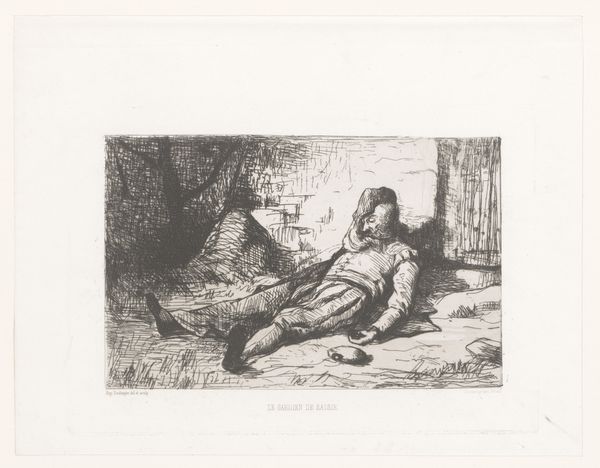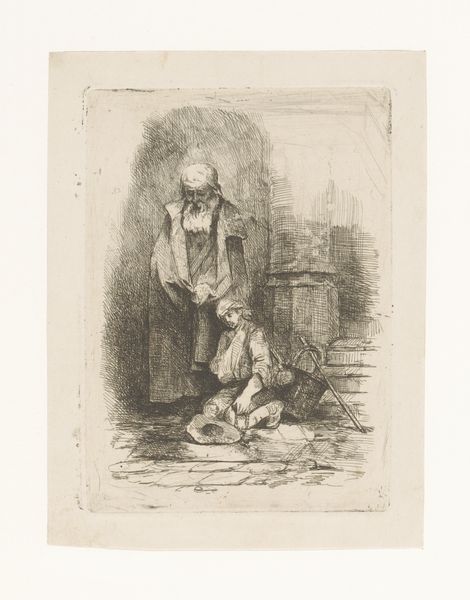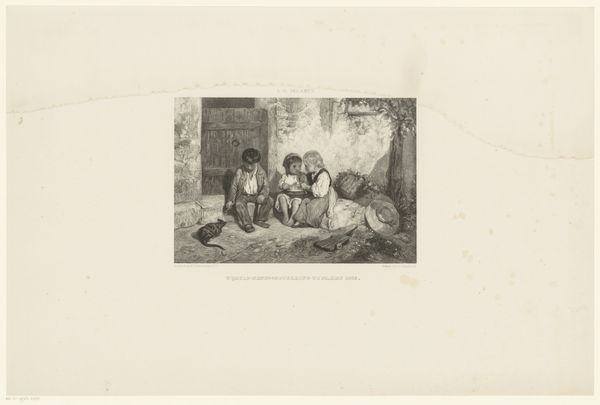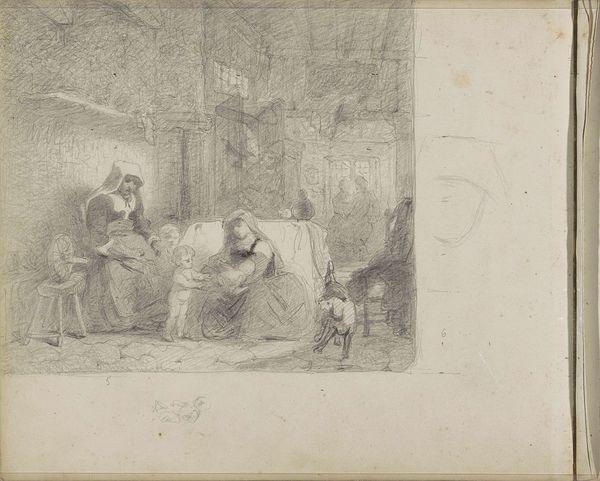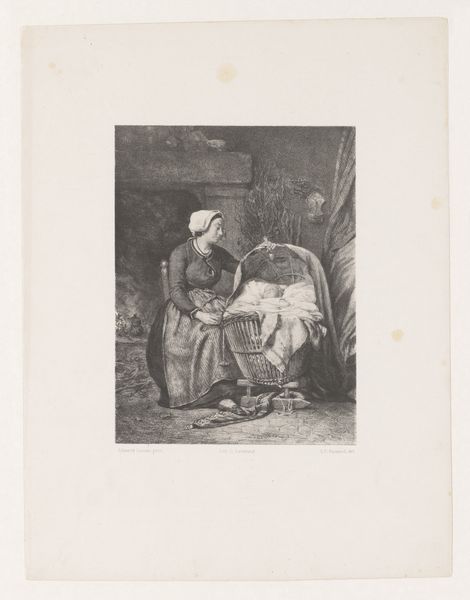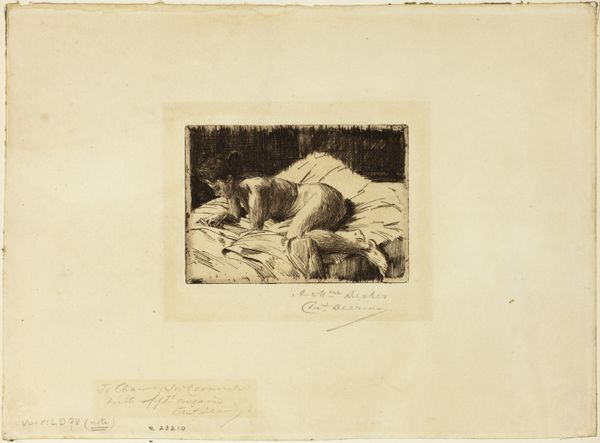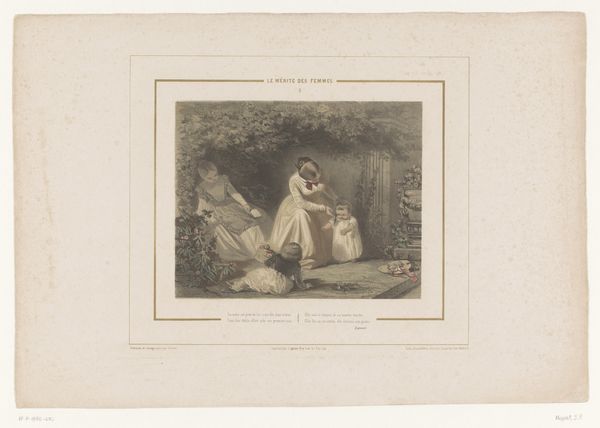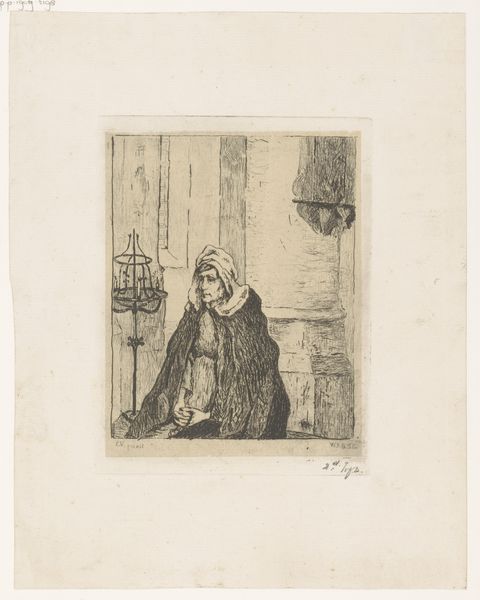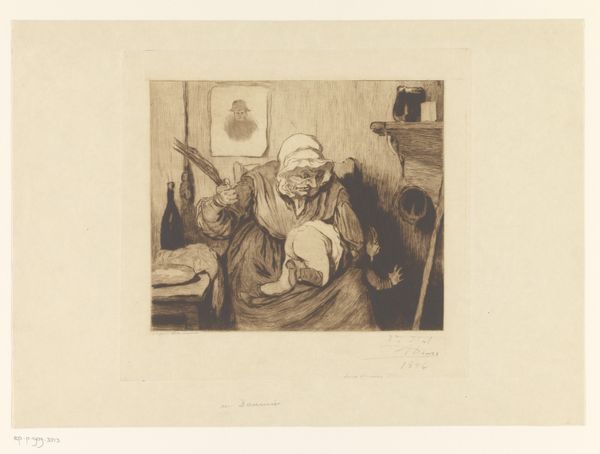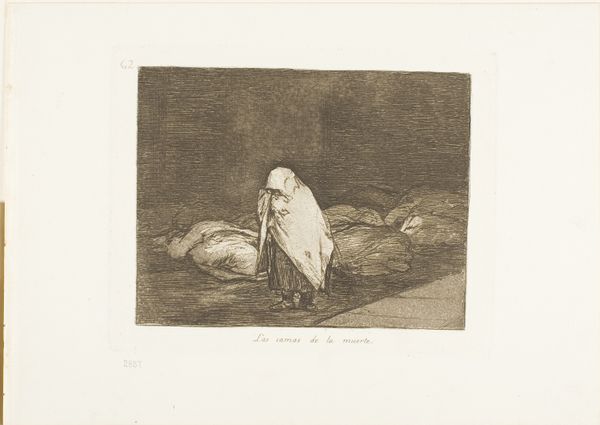
drawing, print, etching, paper
#
portrait
#
drawing
# print
#
etching
#
pencil sketch
#
paper
#
romanticism
Dimensions: 142 × 213 mm (chine); 219 × 296 mm (sheet)
Copyright: Public Domain
Curator: Before us is Eugène Delacroix's etching, "Chief Mohammed-Ben-Abou," created in 1833. It’s currently part of the Art Institute of Chicago's collection. Editor: Wow, there's a real intimacy to this piece. It’s so delicate, like a whispered secret. The cross-hatching almost vibrates. Curator: Indeed. Note how Delacroix utilizes line and shadow to convey not only form but also texture and light. The etching captures a sense of Orientalist Romanticism prevalent during the period. We are invited into the Chief's private sphere, perhaps an attempt by Delacroix to dissect Western stereotypes concerning cultural 'otherness'. Editor: I get a real sense of the Chief’s quiet authority. It's in the way he sits, so relaxed but poised. And the objects around him – the weapon on the wall, the contents next to him -- they give a sense of his character, his story, without having to spell it out. Very economical with the details. Curator: Precisely. Consider the spatial relationships at play. The layering, the details in contrast with areas of intentional flatness. It’s a calculated interplay to maintain the viewer's focus. Delacroix uses the tools and materials as rhetorical gestures, aiming for narrative effect. Editor: He's got these hooded eyes that seem to know something you don’t, and a weary composure, too. He makes me wonder about his day, and the sort of challenges and joys he’s seen. Etching—so stark—is an ideal choice here to mirror an experience. Curator: Well articulated. We witness Romanticism’s interest in emotion and the sublime manifest as representational acuity. This image captures an engagement with, rather than an attempt to capture, raw feeling through its deliberate formal rendering. Editor: And it avoids exoticizing the subject, a danger of Orientalist art, managing a dignified presentation of his subject. Curator: Delacroix allows formal composition to negotiate, carefully, potential interpretive shortfalls. The texture, shadow, and framing become vital in this. The window looking out also suggests the passage of time, transformation of power and experience and history that a face can't quite reveal. Editor: So even though it’s small and subdued, it’s packed with ideas about power, identity, and seeing across cultural divides. The scale contributes to its strength, forcing the viewer to adopt an intimacy when analyzing. Curator: And the more closely you consider this print, the more nuanced those considerations become. Delacroix challenges notions of cultural otherness. Editor: The drawing holds both history and so much personal reflection in the single figure, I love the potential locked in the intimate etching.
Comments
No comments
Be the first to comment and join the conversation on the ultimate creative platform.
